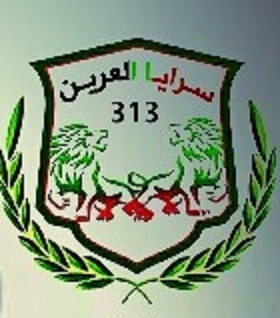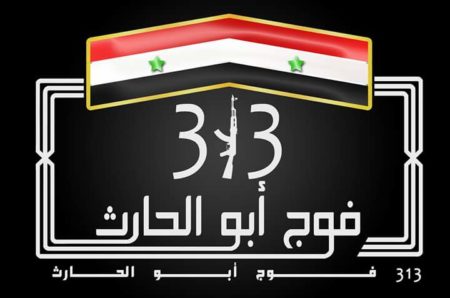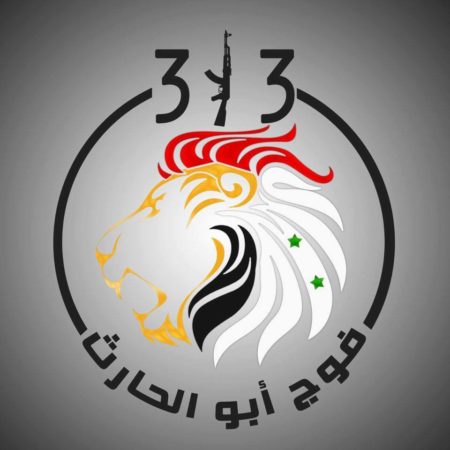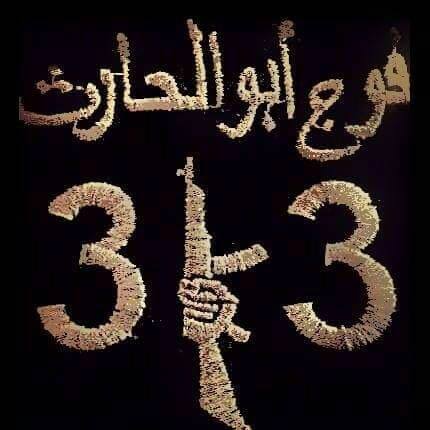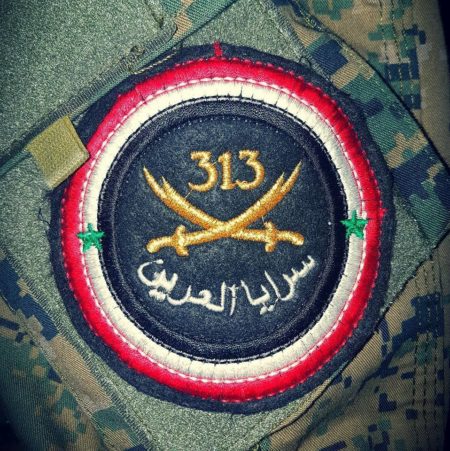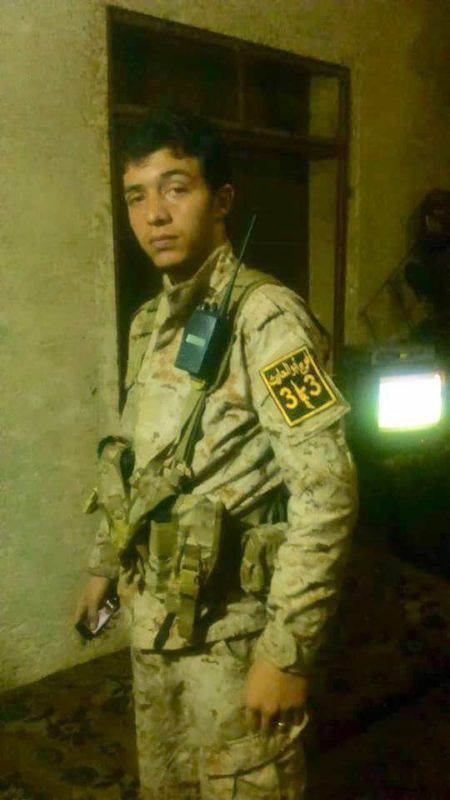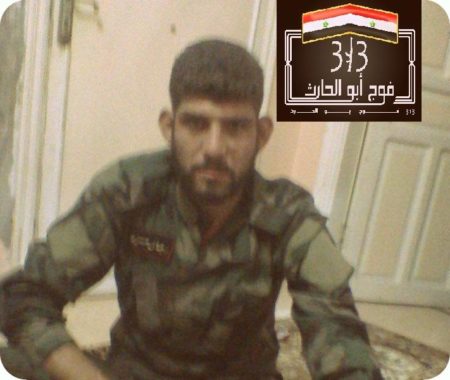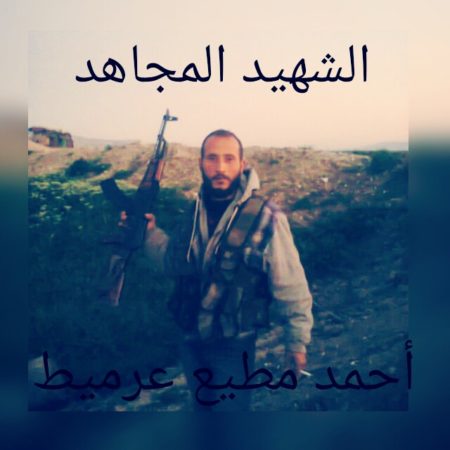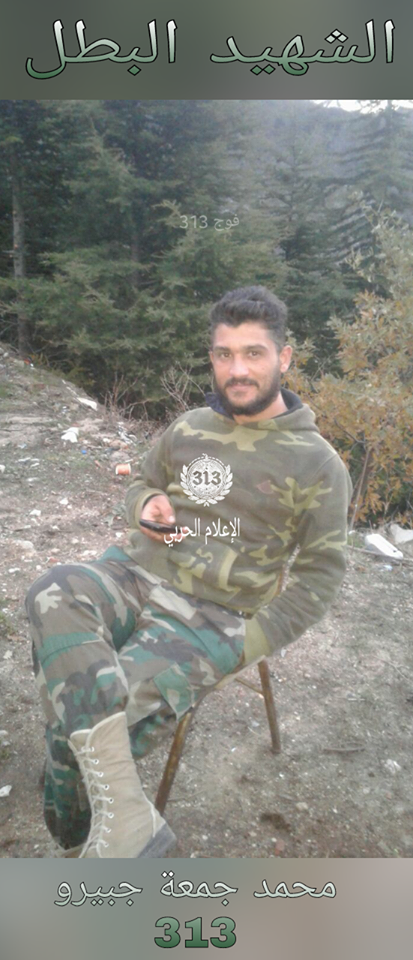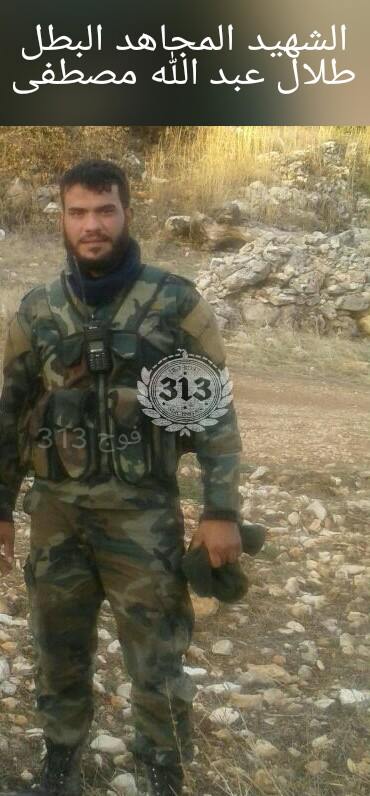MESOP BACKGROUNDER : Saraya al-Areen- An Alawite Militia in Latakia
| 10 Dec 2016 10:17 AM PST –By Aymenn Jawad Al-Tamimi
The coastal province of Latakia is home to a variety of militias aligned with the Assad regime. One kind that can perhaps be distinguished consists of groups that seem to be independent in affiliation but are clearly associated with the Alawite community and identity. A previous case I have examined is that of Liwa Usud al-Hussein (“The Lions of Hussein Brigade”), reconstituted as Quwat Humat Souriya (“Forces of the Protectors of Syria”) and led by one Hussein Tawfiq al-Assad, who comes from the Assad family’s ancestral village of al-Qardaha. In the summer, the militia launched a recruitment campaign, urging those interested in joining to head to the group’s base near the al-Qardaha bridge, with an offer of a salary of 80,000 Syrian pounds a month for fighting on the Palmyra front and 50,000 Syrian pounds a month for fighting on the Latakia countryside front. Like many other militias, Quwat Humat Souriya sought to address the issue of draft avoidance and desertion by offering taswiyat al-wada’ (“sorting out of affairs”). Saraya al-Areen (“Brigades of the Den”)- the group under consideration in this article- is a militia similar in nature to Liwa Usud al-Hussein. The “Areen” (“Den”) part of the group’s name can be taken in a number of ways: as in, the lion’s den- Areen al-Assad- that has the double entendre of referring to the lions in the militia emblem above and to Assad himself. There is also the use of the word areen in the Syrian national anthem, which describes Syria as the Areen al-Uruba (“Den of Arabism”). Of note alongside the lion imagery in the emblem above is the feature of the number 313. This number also appears in other symbols associated with the group, including those that feature its alternative name of Fawj Abu al-Harith (“The Abu al-Harith Regiment”), named for the militia’s leader who goes by the name of Abu al-Harith.
The number 313 has multiple connotations. In the life of the Prophet Muhammad, it refers to the number of Muslim soldiers at the Battle of Badr in a significant victory over the Quraish. In this regard, it should be noted for example that there is a rebel group called “Soldiers of Badr: 313” operating in the north Homs countryside rebel enclave. The number 313 also has eschatological significance, in referring to the companions of the Imam al-Mahdi. It is therefore associated in the eschatological context foremost with Twelver Shi’i Islam, of which the Alawite religion is an offshoot. Unsurprisingly, the number 313 has been observed in Shi’a militia discourse and social media on Syria. Perhaps part of the Saraya al-Areen’s image can be seen as influenced by the presence of Shi’i militias, since the group’s social media output has also featured slogans like Labbayk ya Zainab (“At your service, oh Zainab”), foremost associated with the Iranian-backed Shi’i militias fighting in Syria under the notion of defending the Sayyida Zainab shrine in Damascus. I have touched on the wider use of Shi’i sloganeering previously. Even so, the Saraya al-Areen identity is clear through its promotion of photos of Alawite shrines in the al-Qardaha area. Like Liwa Usud al-Hussein, Saraya al-Areen is said to be an independent faction, going by the testimony of a source in the Muqawama Souriya of Ali Kayali (whose primary base is also in Latakia province, though curiously Kayali tells me he has not heard of the name of Saraya al-Areen). The leader of Saraya al-Areen- Abu al-Harith (not to be confused with the Abu al-Harith who leads the Hawarith contingents of Suhail al-Hassan’s Tiger Forces)- is a man called Yisar al-Assad. He comes from the wider Assad family of the al-Qardaha area in Latakia province. While social media advertising for the brands of Saraya al-Areen/Fawj Abu al-Harith only seems to have come about this year, Yisar al-Assad had previously been identified as leading an armed contingent. A revealing post written in April 2015 by a Syrian army soldier from Latakia complaining about the privileges and lives of luxury of government officials’ children as opposed to the hardships of those serving in the army makes reference to Yisar al-Assad, upholding him and other members of the wider al-Assad family as virtuous in contrast to these officials and their children: “Bitter truth and hurtful frankness…Oh son of the official, what do you feel when you ride in your car and you have a soldier serving you? Oh son of the official, what do you feel when you see the news that the army has advanced in a certain place and has liberated a certain area? Oh dear, is it possible for you to tell me what you feel when you hear that this poor soldier has been martyred to defend you and protect you? Oh son of the official, what do you feel when you know that the salary of the reservist soldier is only 15,000 Syrian pounds a month and under your stead is great wealth? Oh son of the official, is it possible for you to tell me what you feel when the soldier has for breakfast 5 olives, a piece of halawa or potato while you have the most magnificent food for breakfast (God make you eat samm al-hari!)? Oh you, official, and your son: what do you feel when the soldier has to wait for months to see his family and wait for months to have a bath? Soldiers lie down on the soil, wrapped in the Pleiades, while people lie down on ostrich feathers, wrapped in silk covering. Fine, let’s begin now with this talk, and I will begin with the al-Assad family so no one is startled at us on your behalf and speaks: from the al-Assad family, Hilal al-Assad was martyred in Kessab- may God have mercy on him- and his group is from the poor of the coastal region. The Sheikh of the Mountain Muhammad al-Assad- may God have mercy on him- was daily in the Durin region in the Latakia countryside and I saw him with my own eye in complete civilian clothing, and when the leadership asked him to form the mountain brigade, he was exposed to assassination. Yisar al-Assad Abu al-Harith has the strongest fighting group in the mountain, and their salaries and expenditures are on his personal shoulder. May God protect him and his group of poor people from the region. As for what remains from the wealthy and the officials, their children are living with the comfort and eye of God upon them, but God’s curse be upon their effeminate manliness! The poor of Syria are the ones who have borne the burden of the cause. The poor of Syria are the ones who have offered martyrs. The poor of Syria are the ones who have sacrificed what is most precious and dear in self-sacrifice for the homeland.” While one may wish to dismiss this post as a rant, it makes some important points. Syrian army service is indeed long, has poor working conditions and very low salaries. The bad terms of service are a key factor behind militia recruitment, as militia groups can offer better salaries and amnesty terms to prevent arrest for draft evasion. It is also true that the Sahel [coastal] region has many poor people, including among the rural Alawites. That Alawites are over-represented in the regime and its security apparatus leadership in particular does not mean Alawites are somehow immensely wealthy compared to the rest of the population. On the contrary, many parts of rural Latakia are underdeveloped. As for using the wider al-Assad family as a foil against wealthy government officials and their scions, one can make what one will of this line. In any case, the reference to Yisar al-Assad as providing the salaries and expenses for the fighters of his group corroborates the view of Saraya al-Areen/Fawj Abu al-Harith as an independent faction, in that it appears to be Yisar al-Assad’s own initiative rather than having a larger affiliation. Other references to Yisar al-Assad are rather scarce. He played a role in 2014 in overseeing celebrations in the al-Qardaha area congratulating Bashar al-Assad on his predictable re-election as president. A reference to him also turns up at the very start of the civil war in March 2011, in which he is described as being one of the shabiha of al-Qardaha. In so far as the term shabiha is used in keeping with its historical origins to refer to Alawite smugglers in the coastal region who have made large profits and acted as though they were above the law, then it might appropriately apply to Yisar al-Assad. The pro-opposition newspaper Zaman al-Wasl, claiming to have criminal and intelligence records on people from the wider al-Assad family, identifies a Yisar al-Assad as born in 1977 in al-Qardaha and involved in smuggling and possession of war weapons. When did Saraya al-Areen/Fawj Abu al-Harith come into existence? As mentioned, social media promotion only seems to have come about this year, but that does not mean Yisar al-Assad’s group did not exist in some form prior to 2016. Besides the April 2015 post cited above that identifies him as leading a fighting contingent, a representative for Saraya al-Areen told me that “we have been fighting since the beginning of the crisis, affiliated with the Syrian Arab Army. We fight terrorism in any place.” These remarks can be seen as little more than standard rhetoric, in that it can be a matter of prestige to say your group has been fighting from the outset of the civil war, but there can also be an element of truth in that militias that only recently started promoting themselves on social media can still have existed on the ground under prior names and forms (cf. Liwa al-Baqir and the Local Defence Forces in Aleppo). In terms of military engagements promoted under the Saraya al-Areen/Fawj Abu al-Harith brands, they primarily concern the Latakia front, as regime forces aim to push the rebels out of the last strongholds in the northeastern corner of the province, contrasting with the threat posed in 2013 when a rebel offensive spearheaded by jihadists came very near to al-Qardaha. The operations in Latakia have included coordination with the Dir’ al-Amn al-Askari (“Military Security Shield”) forces that are affiliated with the military intelligence in Latakia province. The militia also promoted deployments earlier in the year on the Aleppo front. Alongside these operations, the militia has claimed a number of ‘martyrs’, some of which are noted below.
In short, the existence of Saraya al-Areen/Fawj Abu al-Harith, like Liwa Usud al-Hussein, provides an interesting case study for the militias of distinctly Alawite identity with roots in the wider al-Assad family of the al-Qardaha area, seemingly lacking the familiar affiliations to larger bodies like elite army units or one of the intelligence branches. This case illustrates one of many aspects of the complex militia landscape in regime-held Syria. |
www.mesop.de
